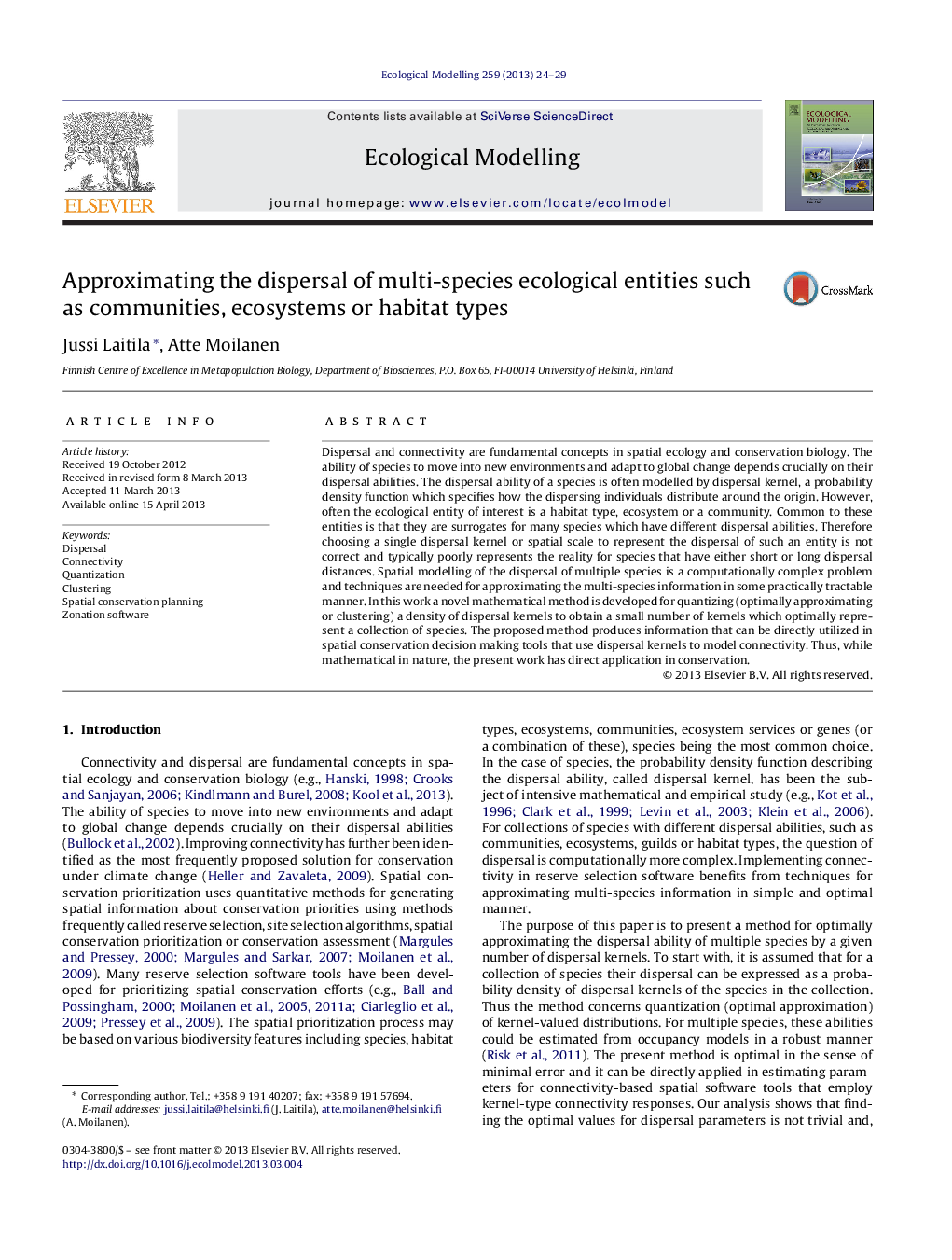| Article ID | Journal | Published Year | Pages | File Type |
|---|---|---|---|---|
| 6297220 | Ecological Modelling | 2013 | 6 Pages |
â¢We analyze the dispersal of ecological communities or other collections of species.â¢Community-level dispersal is modelled as a distribution of dispersal kernels.â¢The distribution is optimally approximated by any finite number of kernels.â¢The approximation method improves our understanding on spatial modelling.â¢The method can be directly applied in conservation decision making tools.
Dispersal and connectivity are fundamental concepts in spatial ecology and conservation biology. The ability of species to move into new environments and adapt to global change depends crucially on their dispersal abilities. The dispersal ability of a species is often modelled by dispersal kernel, a probability density function which specifies how the dispersing individuals distribute around the origin. However, often the ecological entity of interest is a habitat type, ecosystem or a community. Common to these entities is that they are surrogates for many species which have different dispersal abilities. Therefore choosing a single dispersal kernel or spatial scale to represent the dispersal of such an entity is not correct and typically poorly represents the reality for species that have either short or long dispersal distances. Spatial modelling of the dispersal of multiple species is a computationally complex problem and techniques are needed for approximating the multi-species information in some practically tractable manner. In this work a novel mathematical method is developed for quantizing (optimally approximating or clustering) a density of dispersal kernels to obtain a small number of kernels which optimally represent a collection of species. The proposed method produces information that can be directly utilized in spatial conservation decision making tools that use dispersal kernels to model connectivity. Thus, while mathematical in nature, the present work has direct application in conservation.
